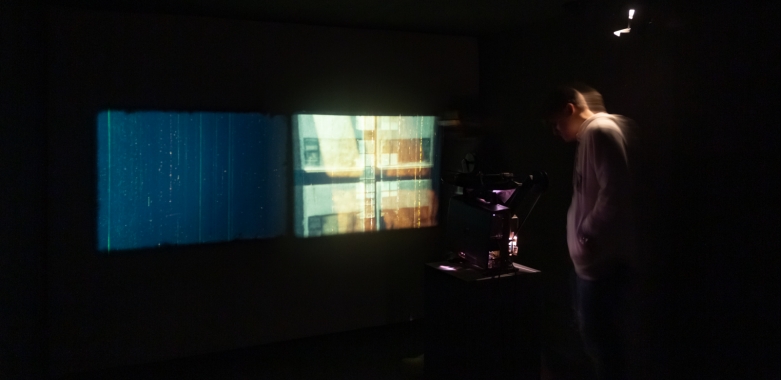Contrary to what the title suggests, Aula magna is a minimalist composition, made up by two 16 mm projectors placed side by side. The films portray the artist's departure from an environment that is dear to him, through the variation of light, filtered through the living room window of his house, and its reflections on the wooden floor. Interspersed sentences, fragments of dialogues, laughter, the sound of traffic on the avenue, the clinking of glasses are sounds that arise from direct recordings made during gatherings on the same space and that make up the audio of each of the two overlapping films. In this composition that disaggregates the environment, discontinuous forms flash, in an intermittent movement generated by the editing cuts coordinated with the sound and by bodies that pass before the light, causing a flickering effect that quotes films from the structural cinema of the 1960s and 1970s. The light thus overflows from the living room of the apartment to the exhibition room, subtly leading the viewers to perceive the effects of the cinema experience in the space that surround the screen.



